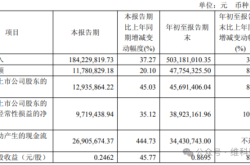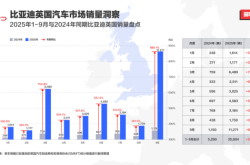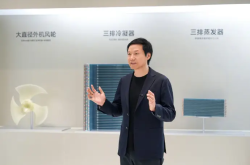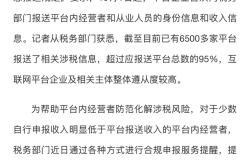SenseTime Awaits Turnaround
![]() 03/31 2025
03/31 2025
![]() 699
699
Written by | Wen Yehao
Edited by | Wu Xianzhi
On March 26, Beijing time, SenseTime released its full-year and fourth-quarter financial report for 2024.
The report revealed that in 2024, SenseTime's annual revenue amounted to 3.77 billion yuan, marking a 10.8% year-on-year increase, despite incurring a net loss of 4.307 billion yuan.
While still incurring losses, the revenue curve, which had been in decline, finally showed a turning point, delivering the company's first annual performance report since its IPO with revenue returning to growth.
More significant than the financial results is SenseTime's substantial investment in generative AI. The traditional vision AI segment, which once bolstered SenseTime's valuation, is now showing signs of growth fatigue, while the large model business has emerged as a dark horse, accounting for over 60% of revenue, drastically altering its revenue structure.
Clearly, 2024 was a year of pivotal changes for SenseTime. From a To G business-reliant service provider to a player in large models and AI computing power, and then venturing into vertical fields like automobiles, SenseTime is striving to carve out a path for commercial breakthrough.
However, this path is fraught with both potential and challenges. While pursuing technological trends is undeniably exciting, the profit outlook remains uncertain – the story is promising, but the ending has yet to be written.
From Project-Oriented to Product-Oriented
Perusing SenseTime's 2024 financial report, the performance of its generative AI business stands out.
The report indicates that in 2024, SenseTime's revenue from generative AI-related businesses reached 2.4 billion yuan, surging 103% year-on-year, with its proportion of total revenue rising from 34.8% the previous year to 63.7%.
In just two years, the large model business has swiftly transitioned from a marginal experiment to SenseTime's undisputed main business. However, this remarkable transformation is more of a necessity due to the contraction of traditional AI businesses.
Taking the once high-flying vision AI business as an example, its revenue in 2024 was 1.112 billion yuan, a year-on-year decrease of 39.5%. The smart city trend has waned, and the security surveillance market is becoming saturated. The role played by traditional vision AI, which once underpinned SenseTime's valuation, is diminishing, and AI 2.0 is expected to emerge as a new growth driver.
Generative AI has naturally become the new frontier. From the "RRI" series of large models to self-built AI supercomputing centers like Lingang, SenseTime's transformation journey is gradually unfolding.
SenseTime claims that its RRI model has surpassed GPT-4 Turbo in certain metrics and ranks third in the IDC report with a market share of 13.8%, following Baidu and Alibaba Cloud. Although in the large model industry, claims of rivaling or surpassing top players abound, the gap between SenseTime and the giants has not widened to an unbridgeable extent.
Moreover, for SenseTime, the transition to generative AI is not merely a business breakthrough but also a fundamental shift in its revenue model.
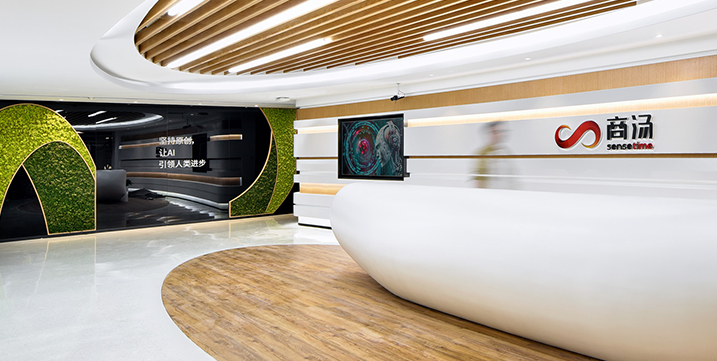
In the past, SenseTime was more project-oriented, relying on the G-end market to provide customized solutions. While its revenue scale expanded rapidly, the quality of its revenue was unsustainable: numerous one-time projects, high customization, significant human resource investment, long and unstable cash flow cycles, and a lack of profitability.
Therefore, from 2018 to 2021, despite SenseTime's rapid revenue growth, it continued to incur losses. A crucial reason was that the expansion of project-based business necessitated continuous investment in human delivery and custom development, with minimal economies of scale.
However, the era of generative AI has completely altered this landscape. Companies now provide services to the market through standardized products, large model platforms, cloud APIs, and other generalized methods, shifting from selling human resources to selling subscriptions and services.
In this context, AI players can serve a vast number of small and medium-sized customers without customization, unlike project-based revenue that is consumed in one go. Scalable replication becomes feasible, marginal costs are significantly reduced, and revenue sustainability and predictability improve.
SenseTime's RRI is seeking its own reshaping opportunity within this trend – transitioning from project-oriented to product-oriented, transforming from a past "engineering company" reliant on a large workforce to a more stable, scaled product- and platform-based company.
However, this path is not without challenges. Customers will only pay if the product features are sufficiently powerful and user-friendly. At this stage, competition in the generative AI sector is fierce – giants like Tencent and Alibaba are embedding large models into their ecosystems and forming closed-loop advantages, while players like iFLYTEK and Huawei have their respective strengths. Additionally, the rapid rise of the open-source large model ecosystem is inevitably squeezing SenseTime's industry niche.
Compared to giants, SenseTime, which made its fortune in computer vision, has a first-mover advantage in multimodal large models, but its shortcomings in scale and ecological layout are still apparent. Technological iteration in the large model field is extremely rapid, with continuous large-scale R&D investment being a long-term war of attrition.
Therefore, despite the positive outcomes of the transformation, for SenseTime, which is still mired in losses, it is far from the time to relax.
Burning Money for Growth, When Will Dawn Break?
SenseTime's path to profitability is not yet over. However, in 2024, its net loss narrowed significantly by 33.7% year-on-year to 4.307 billion yuan.
From the financial report structure, the largest burden on SenseTime's costs still stems from R&D expenditures. In 2024, its R&D expenses reached 4.132 billion yuan, with an expense ratio exceeding 100%.
For SenseTime, which is forging ahead in generative AI, this is more of a strategic choice. Cutting R&D investment to seek short-term profitability can certainly improve the balance sheet but would greatly sacrifice the company's long-term competitiveness. Therefore, losses must be incurred to fund technological progress, thereby securing future technological barriers and market share.
But this also means that from a financial perspective, SenseTime will still struggle to achieve profitability in the short term.
The key to SenseTime achieving break-even lies in two points. First, its gross profit scale must increase, meaning the rapid growth of high-margin revenue must outpace cost growth.
The financial report shows that in 2024, SenseTime's gross profit margin was 42.9%, slightly down from 44.1% in 2023. Fortunately, the trend in 2024 was positive – revenue increased by 10.8%, and losses narrowed by 33.7%, indicating that the increment in revenue has gradually begun to dilute fixed costs. As the user base for large model services expands, every additional revenue generates more effective amortization of R&D and computing power costs, and the marginal gross profit margin is expected to gradually improve.
Second, the growth rate of R&D investment and capital expenditure needs to be appropriately slowed down. Over the past few years, SenseTime's layout in supercomputing centers and large model technologies has been ahead of its time, leading to high costs.
When the "foundation" is laid, the next stage will inevitably shift from "blooming everywhere" to "precise investment". After all, no matter how powerful a general AI is, it needs to create value and monetize through specific scenarios. For example, computer vision found a high-demand scenario in security surveillance, enabling large-scale deployment; large language models are now taking the lead in customer service, content creation, and other fields.
This means that as SenseTime transforms into a product- and platform-oriented company, it must strengthen its "general engine" on the one hand and seek the "best track" on the other – only with both horizontal platforms and vertical scenarios can it ensure that technology is not suspended in the air.
However, the AI industry is constantly evolving, and new technological waves may force players to continue on a high investment trajectory. While SenseTime, with 12.75 billion yuan in cash and equivalents on hand at this stage, can still replenish ammunition for continuous high investment, at least from the information conveyed in the financial report, SenseTime's management is clearly aware that it cannot blindly burn money and is gradually considering profitability as part of its strategic considerations.
Facing the balance between "burning money" and "making money", SenseTime must rise to the challenge.
End
In 2024, SenseTime completed the reorganization of its "1+X" organizational structure, incubating non-core or unprofitable businesses into ecosystem companies for independent external financing and forming a synergistic effect with the main business, while further focusing on generative AI and traditional AI core tracks – active downsizing carries a certain degree of self-rescue.
SenseTime also disclosed in its 2024 financial report that as of early 2025, five ecosystem companies had successfully completed independent financing.
This approach has helped SenseTime "lighten its load" to a certain extent, coupled with the gradual recovery of main business revenue and the gradual emergence of scale effects, its loss curve is expected to continue to converge in the coming years. If no major unexpected events occur, SenseTime is anticipated to achieve a significant narrowing of losses or even achieve quarterly break-even within the next 2-3 years.
Among the many "X businesses" spun off by SenseTime, the smart car business is undoubtedly one of the most important.
SenseTime's smart car business brand is named "Absolute Shadow", with its product line covering the three modules of driving, cabin, and cloud, forming a complete "driving-cabin-cloud" integrated system.

It is noteworthy that while the Absolute Shadow product system boasts a decent breadth, its hardware capabilities are relatively weak, especially in the core areas of automotive-grade chips and LiDAR, where it is currently more of a provider at the software and algorithm level. This makes it more suitable for auto companies with certain integration capabilities and the need for an AI brain – for auto companies that prefer complete vehicle solutions, Absolute Shadow's competitiveness needs to be enhanced.
In the fiercely competitive smart car market, Absolute Shadow faces stiff competition from technology players like Baidu, Huawei, and Pony.ai, as well as the impact of self-developed intelligent driving by new-energy vehicle companies. This is reflected in the financial report – in 2024, Absolute Shadow's business revenue was 256 million yuan, a year-on-year decrease of 33.2%.
In terms of auto company customers, at this stage, new-energy vehicle companies are riding a wave of self-developed intelligent driving – XPeng, NIO, and others generally choose to go further to shape brand differentiation and competitive advantages, which means that relying on auto companies' turnkey solution orders is becoming more difficult.
Cross-border technical cooperation between companies like XPeng and Volkswagen indicates that auto companies are transitioning from being pure customers to suppliers – in the future, SenseTime will not only have to compete for auto company orders but may also face new competition from auto company technology exports.
It is worth mentioning that in 2024, Absolute Shadow launched an in-vehicle large model named "A New Member For U" (Your Family Member), focusing on emotional interaction and proactive care, starting to bet on a new track in the hope of changing the situation.
Therefore, the "1+X" structure, in a sense, enables SenseTime to focus on its main business and unbind potential businesses, but challenges persist – the large model field may seem replete with imagination, but it also faces intense competition. How this "gatekeeper" of the AI era can travel steadily and far on the path to commercialization remains an open question for now.

